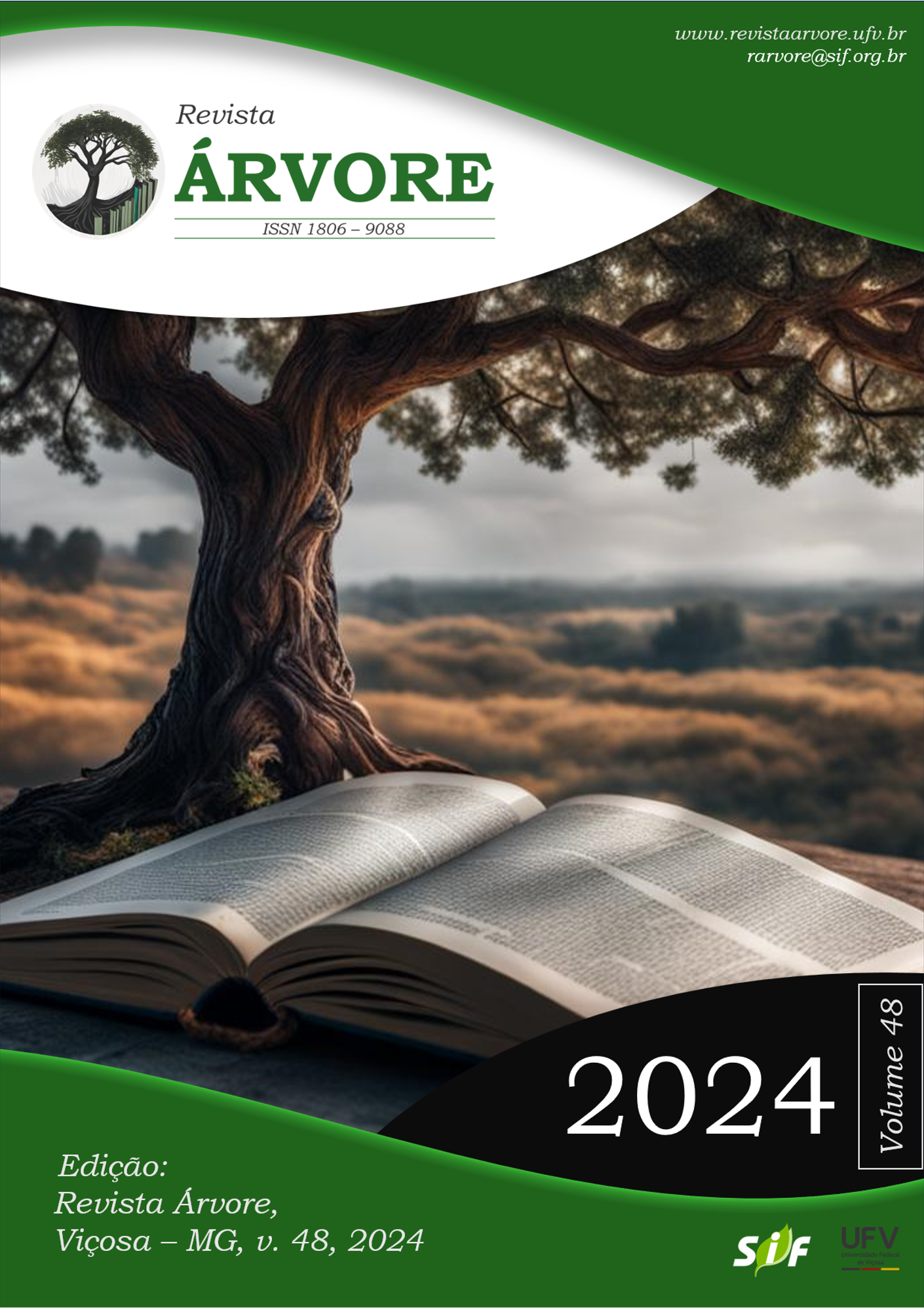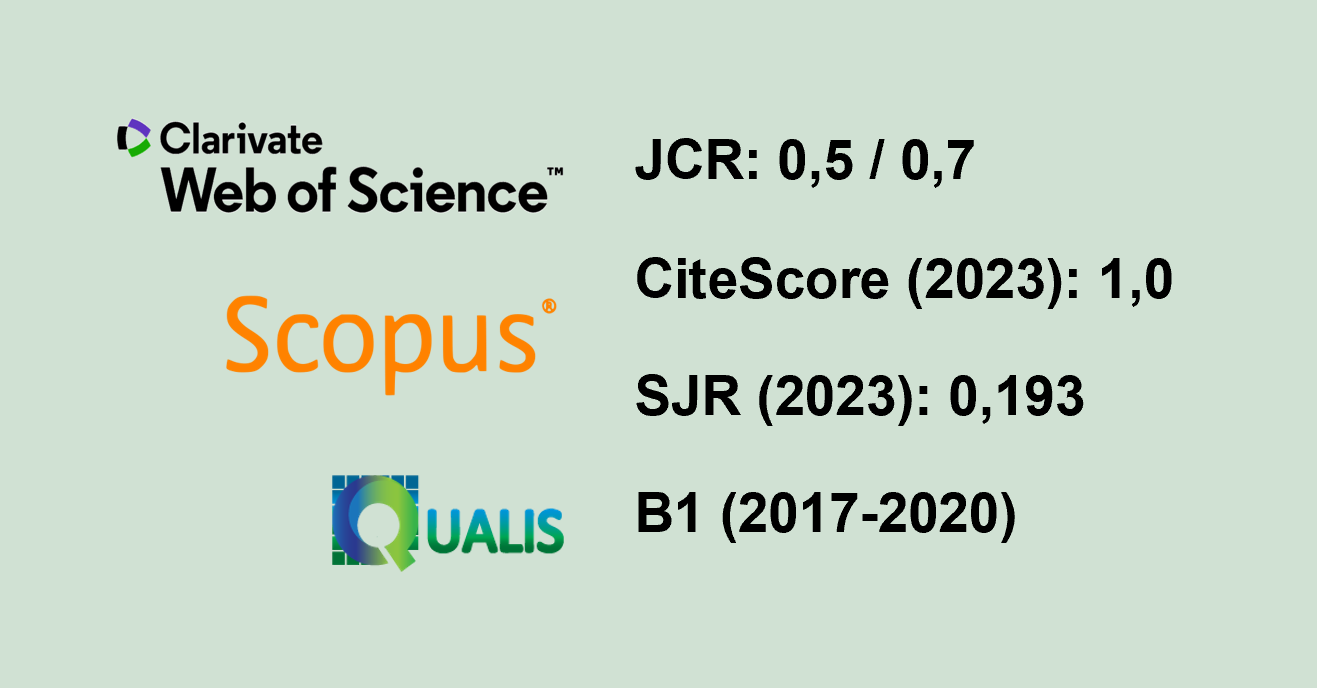Metodologias para avaliação de kino e estimativas de parâmetros genéticos em Corymbia
DOI:
https://doi.org/10.53661/1806-9088202448263712.Palavras-chave:
Melhoramento florestal, qualidade da madeira, correlação genotípica, gomoseResumo
Espécies do gênero Corymbia são consideradas potenciais alternativas ao eucalipto. Além de possuir madeira de qualidade superior, Corymbia spp. são tolerantes à maioria das pragas, doenças e estresses abióticos que afetam as plantações de eucalipto, incluindo distúrbios fisiológicos, déficit hídrico e danos causados pelo vento. No entanto, as tensões ambientais estimulam a produção de kino, o que diminui a qualidade da celulose e da madeira serrada. Este estudo teve como objetivo estabelecer um método para avaliação de kino e estimativa de parâmetros genéticos em Corymbia. Para isso foram utilizados 16 clones híbridos de Corymbia (C. citriodora × C. torelliana) e 5 clones de Eucalyptus. Dois métodos (M1 e M2) foram testados para avaliação; M1 consistiu na perfuração da casca com Pilodyn e M2 consistiu na perfuração do cerne com Pilodyn. Foram avaliados os seguintes parâmetros: incidência de exsudação, comprimento do exsudato que fluiu sobre o caule e peso do exsudato. Os parâmetros genéticos foram estimados por um método de modelo misto (REML/BLUP). A significância dos efeitos aleatórios do modelo estatístico foi testada pelo teste da razão de verossimilhança. Efeitos clones significativos foram obtidos para todos os parâmetros, exceto para o comprimento do exsudato avaliado por M2. Os parâmetros determinados por M1 apresentaram maior herdabilidade e precisão. Portanto, M1 deve ser preferido para avaliação de kino em Corymbia.
Palavras-Chave: Melhoramento florestal; qualidade da madeira; correlação genotípica; gomose.
Downloads
Publicado
Como Citar
Edição
Seção
Licença
Todos os autores concordaram com a submissão do trabalho à Revista Árvore e concederam a licença exclusiva para publicação do artigo. Os autores afirmam que se trata de um trabalho original, e que não foi publicado anteriormente em outros meios. O conteúdo científico e as opiniões expressas no artigo são de responsabilidade total dos autores e refletem sua opinião, não representando, necessariamente, as opiniões do corpo editorial da Revista Árvore ou da Sociedade de Investigações Florestais (SIF).








